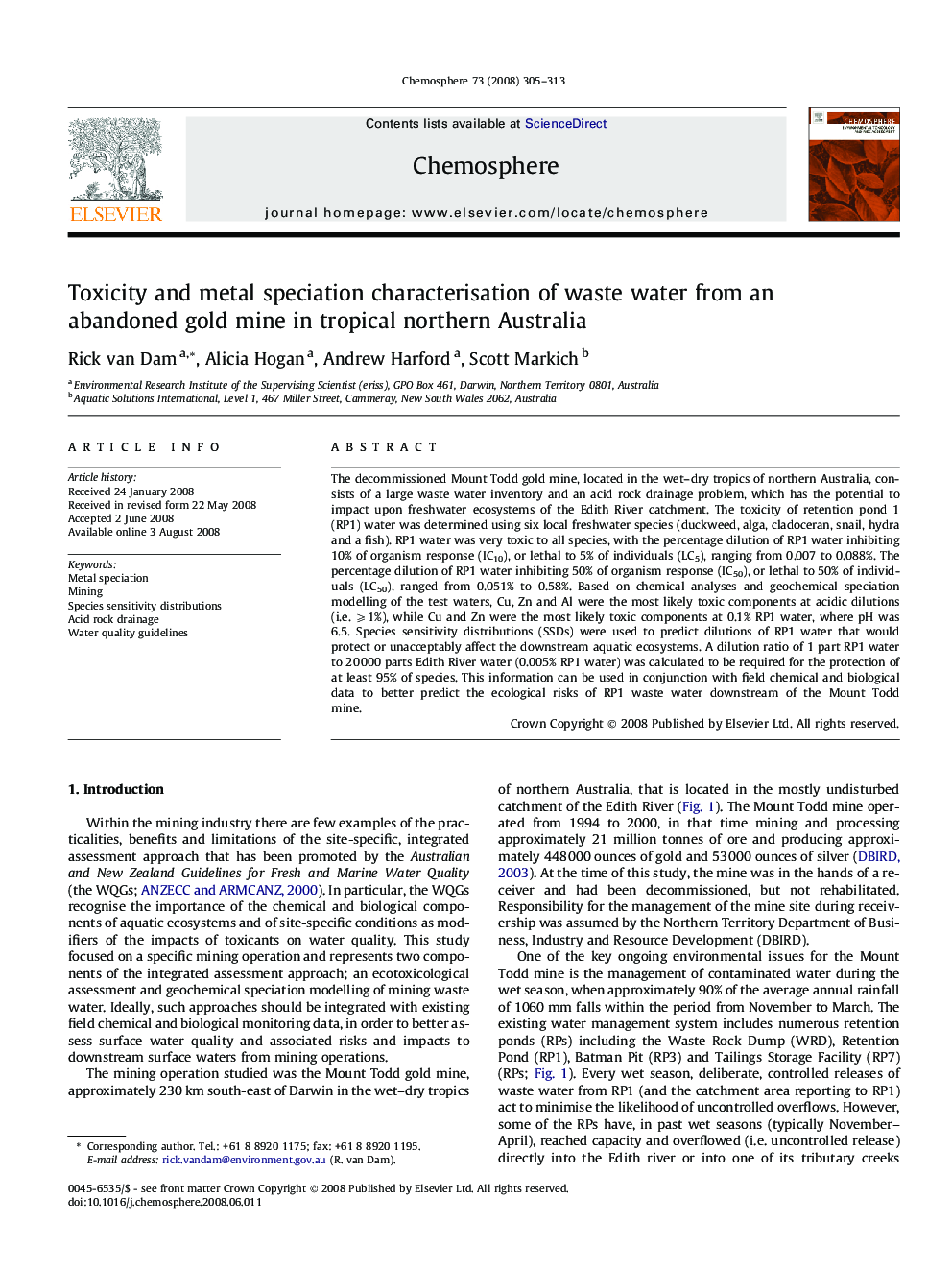| Article ID | Journal | Published Year | Pages | File Type |
|---|---|---|---|---|
| 4413454 | Chemosphere | 2008 | 9 Pages |
The decommissioned Mount Todd gold mine, located in the wet–dry tropics of northern Australia, consists of a large waste water inventory and an acid rock drainage problem, which has the potential to impact upon freshwater ecosystems of the Edith River catchment. The toxicity of retention pond 1 (RP1) water was determined using six local freshwater species (duckweed, alga, cladoceran, snail, hydra and a fish). RP1 water was very toxic to all species, with the percentage dilution of RP1 water inhibiting 10% of organism response (IC10), or lethal to 5% of individuals (LC5), ranging from 0.007 to 0.088%. The percentage dilution of RP1 water inhibiting 50% of organism response (IC50), or lethal to 50% of individuals (LC50), ranged from 0.051% to 0.58%. Based on chemical analyses and geochemical speciation modelling of the test waters, Cu, Zn and Al were the most likely toxic components at acidic dilutions (i.e. ⩾1%), while Cu and Zn were the most likely toxic components at 0.1% RP1 water, where pH was 6.5. Species sensitivity distributions (SSDs) were used to predict dilutions of RP1 water that would protect or unacceptably affect the downstream aquatic ecosystems. A dilution ratio of 1 part RP1 water to 20 000 parts Edith River water (0.005% RP1 water) was calculated to be required for the protection of at least 95% of species. This information can be used in conjunction with field chemical and biological data to better predict the ecological risks of RP1 waste water downstream of the Mount Todd mine.
